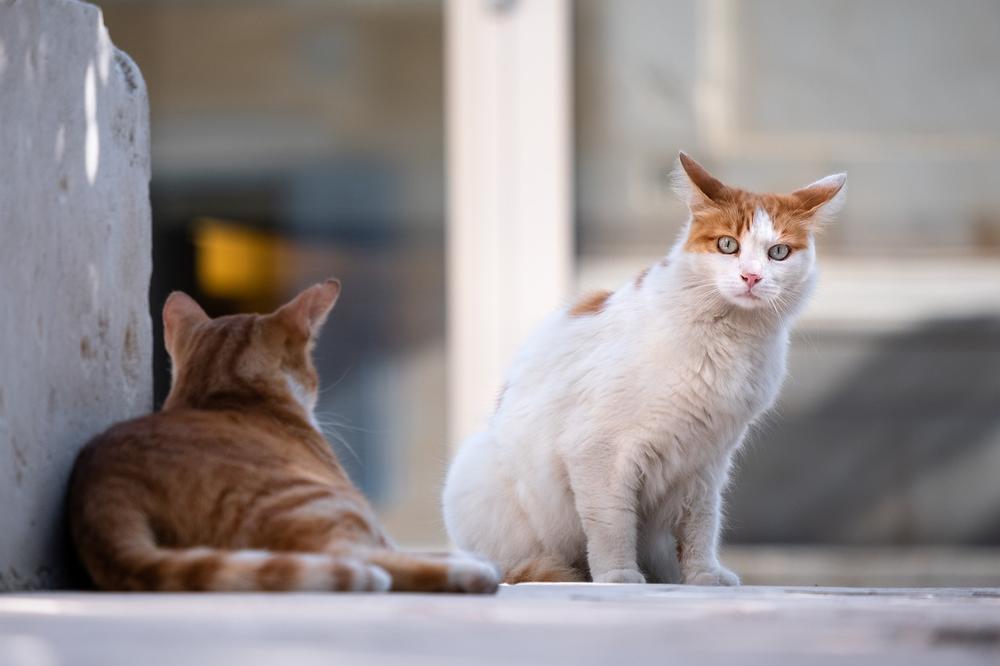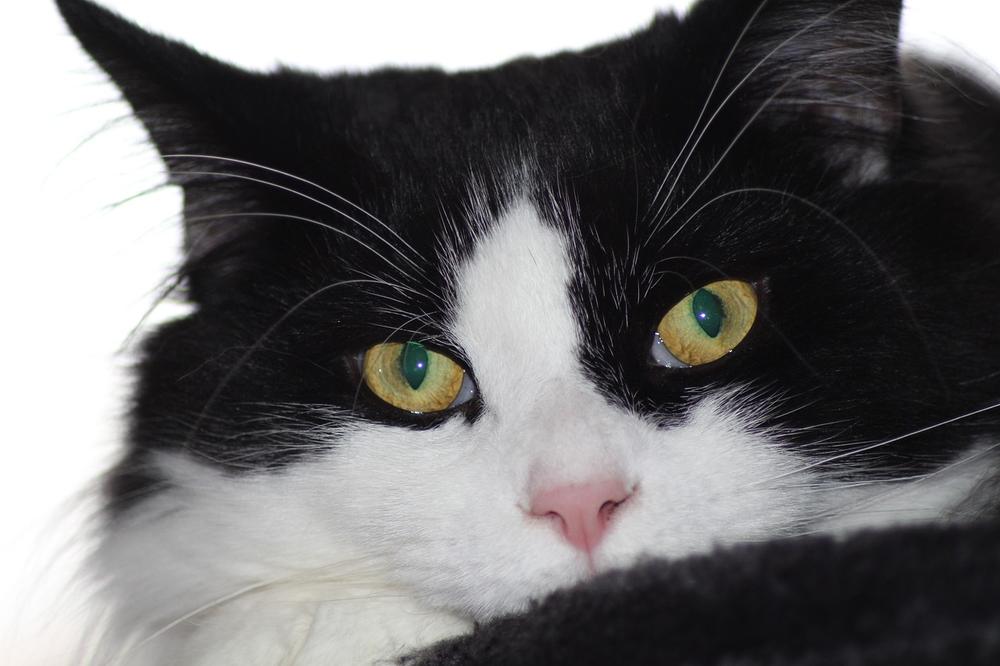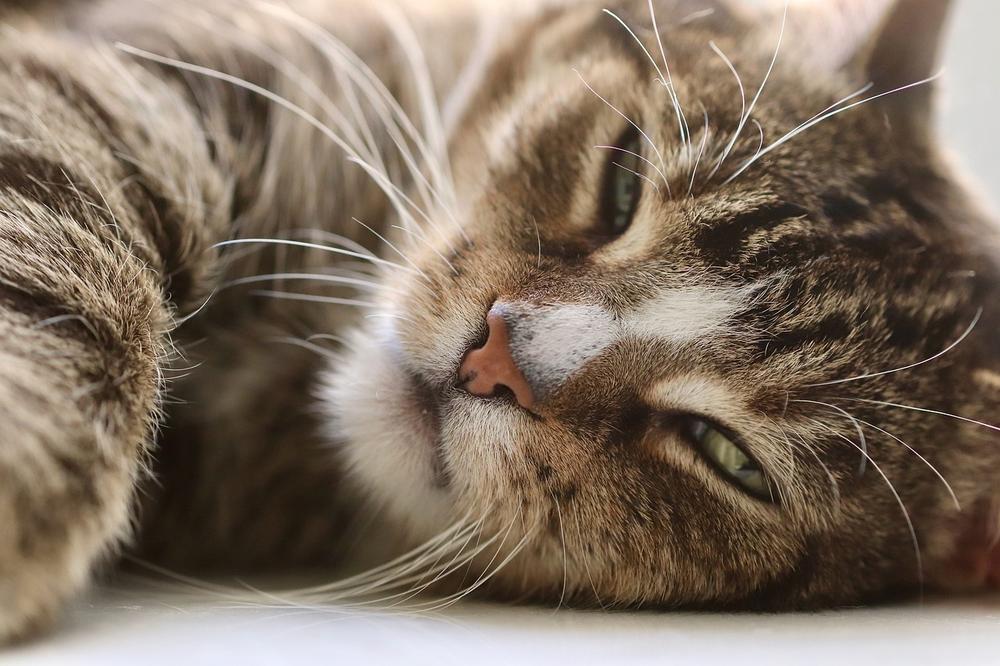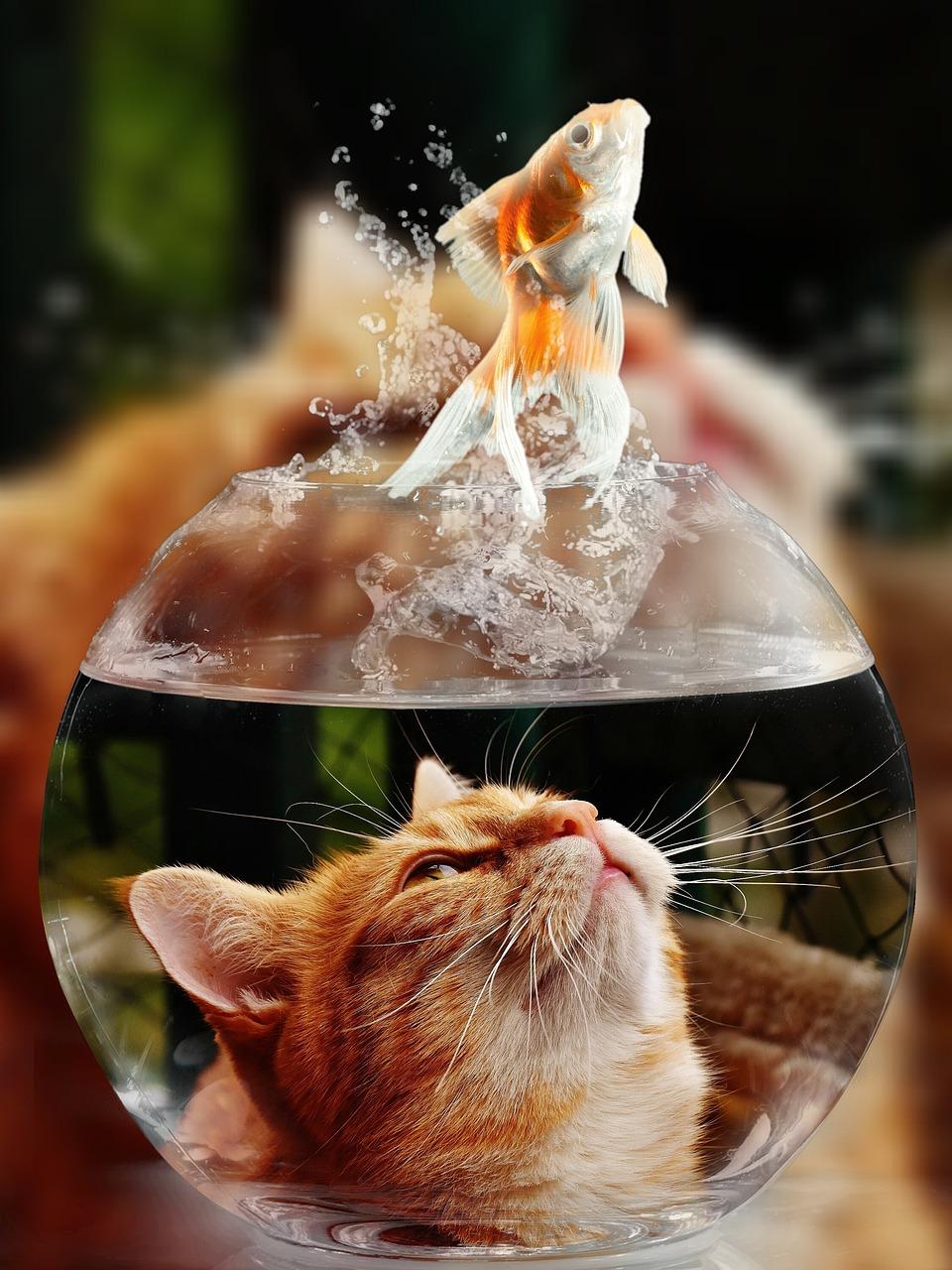How Far Can Cats See? (Revealed!)

How far can cats see?
Intrigued by their unique visual abilities, you can't help but wonder. 😺
Do they have superpowers hidden behind those captivating eyes?
Are they able to spot a mouse from a mile away?
Well, I hear ya.
You're not alone in pondering these feline mysteries.
So, let's put our detective hats on and embark on a journey to uncover the truth together.
Let the cat-eye investigation commence!
How Far Can Cats See?
Cats have limited long-range vision, becoming blurry after about six meters. However, they make up for it with a wider visual field of around 200 degrees, impressive peripheral vision, and heightened senses of smell and hearing.
When it comes to cats' eyesight, they are super sharp at seeing things up close.
However, when it comes to distance, their vision is not as keen as ours.
Ya see, after about six meters, things get a little blurry for our feline friends. Objects that we can see nice and clear up to 100 or 200 feet become fuzzy for cats at just 20 feet away.
Now, this might sound like a bummer, but cats make up for it in other ways.
In fact, cats have a wider visual field than humans.
While we can see about 180 degrees, cats can see around 200 degrees.
They've got a more panoramic view of the world!
To compensate for their not-so-great long-range vision, cats rely on their incredible sense of smell and hearing.

They use these superpowers to recognize distant objects or even people.
It's like they have built-in zoom lenses for their nose and ears!
But wait, there's more. Cats also have impressive peripheral vision that goes beyond ours.
Their sight stretches all the way to 200 degrees sideways. So they can see that sneaky toy mouse creeping up from the corner of their eye!
Now, let's talk about visual acuity.
This is all about how clearly cats can see specific details.
Well, it turns out cats have lower visual acuity compared to us humans.
Their range is somewhere between 20/100 and 20/200. That means a cat needs to be at 20 feet to see what an average human can see at 100 or even 200 feet.
So while cats might not be winning any long-distance vision contests, they sure make up for it with their wide-angle perspectives and fine-tuned senses of smell and hearing. Now, isn't it fascinating how cats see the world?
Main points I'll expand upon further down this article:
- Cats have unique eye structures with almond-shaped eyes and elliptical pupils.
- Cats have a higher number of rod cells than cone cells, enhancing their ability to see in low light.
- Cats' vision is well-suited for hunting and stalking fast-moving objects.
- Cats have a wider visual field and greater peripheral vision than humans.
- Cats excel at seeing in the dark due to the high number of rods in their retina.
- Cats cannot see fine detail or perceive vivid colors.
- Indoor cats are better at seeing up-close objects, while outdoor cats are exceptional at seeing far away.
- Whiskers play a crucial role in cats' navigation and understanding of their environment.
- Cats use other senses like smell and hearing to compensate for visual impairments.
- Cats' night vision is enhanced by their larger number of rod cells.
The Fascinating Visual World of Cats
You won't believe what I'm about to tell you, my friend.
Cats have the most incredible vision, it's mind-blowing!
Did you know that cats can see better than humans in the dark?
It's because their eyes are specially designed for low-light conditions.
It's amazing, isn't it?
Here's how they do it:
Cats have more rod cells in their retina, which gives them superior night vision.
They may not see colors as vividly as we do, but when it comes to prowling around at night, they've got us beat, hands down.
And get this—they may struggle with seeing things up close...
Because their eyes are structured differently and lack certain muscles, cats are actually near-sighted.
But don't worry, they make up for it in long-distance vision.
Outdoor cats, especially, have exceptional abilities to spot and track fast-moving objects effortlessly.

But let's not forget about those cute whiskers on their face.
Believe it or not, these whiskers play a crucial role in their navigation skills.
By sensing changes in air movement, cats can detect obstacles and judge the width of spaces. It's pretty impressive, right?
But hold on, there's more...
Cats don't rely solely on their eyesight.
They're masters at using their other senses too, like smell and hearing.
That's why they can recognize you not just by sight, but also by your familiar scent, sound, and even the way you move.
To sum it all up, cats have a wider field of vision than us humans.
That's handy for spotting elusive prey.
However, we humans have the upper hand when it comes to detecting motion under bright lights.
Oh, and here's an interesting tidbit:
We excel at identifying slow-moving objects that cats might perceive as completely still.
Are you ready for more fascinating facts about the captivating world of cats?
Stay tuned, you won't want to miss it!
Do Cats Have Night Vision?
Cats have exceptional night vision due to their unique eye structure. The tapetum lucidum, located behind their retinas, acts like a mirror, reflecting light back onto the retina. Additionally, cats have more rod cells in their retinas, allowing them to see better in low light conditions.
Cats really know what they're doing when it comes to navigating in the dark, don't they?
Have you ever noticed a cat confidently sneaking around at night?
It's no wonder that they can effortlessly move through shadows without any trouble.
And do you know why they're able to do this?
It all boils down to their incredible eyes.
Let me introduce you to a fancy-sounding term:
Tapetum lucidum.
But what does it actually mean?
Well, this extraordinary structure is located behind a cat's retinas and works like a tiny mirror, bouncing light right back onto their retina. This means that cats essentially get a second chance to see things in lowlight situations, which gives them exceptional night vision.

But wait, there's more.
Cats have more rod cells in their retinas than we do, and although that might not seem particularly glamorous, these remarkable little cells excel in dim lighting.
Think of them as sunglasses for cats, if you will.
Thanks to this amazing feature, cats are able to see even better at night, effortlessly track moving objects with lightning speed, and require significantly less light than us humans.
So, now you understand why cats are capable of pulling off those late-night adventures in the living room with such confidence.
So the next time your feline companion decides that it's the perfect time for a hunting spree just as you're trying to get some shut-eye, remember that their ability to see so well in the dark is all thanks to the tapetum lucidum and those extra special rod cells.
And it gets more interesting...
Have you ever wondered how cats perceive colors compared to humans?
Well, it turns out that cats have a limited range of color perception.
But what exactly does this mean for their vision?
Let's delve into the fascinating world of cat color vision and discover how they see the world around them...
What Colors Can Cats See Best?
Cats see things differently, my friend. Their vision is not like ours.
They mostly see in blue-violet and greenish-yellow.
Reds and warm colors can be challenging for them.
Their photoreceptors are sensitive to those specific wavelengths.
They might have a little sensitivity to green, but they're mainly color blind when it comes to reds and greens, just like many of us.
So what does this mean for cats?
Well, their color sight isn't as broad as ours. While they can see blues and greens, reds might appear more like greens to them.
And those lovely purples we adore?
Cats perceive them as different shades of blue.
In short, their color perception is limited.
But don't fret, they compensate with their sharp senses in other ways.
Why Do Cats Eyes Glow in the Dark?
Cats' eyes glow in the dark due to a reflective layer called tapetum lucidum. This mirror-like layer amplifies incoming light, enabling cats to see better in lowlight conditions. It also gives them night vision superpowers, allowing them to detect subtle movements and objects.
Ever wondered why cats' eyes seem to have this eerie glow when it's dark?
Well, fear not.
I've got your answer.
Cats' eyes glow in the dark because they possess a tapetum lucidum.
Fancy name, but it's basically a reflective layer behind their retinas.
This tapetum lucidum is like a special mirror that helps them see better when light is scarce. It works by amplifying incoming light, making it easier for cats to see in lowlight conditions.

The magic happens when light enters their eyes in the darkness.
The tapetum lucidum reflects this light back out, kind of like a boomerang, straight onto the retina.
And Voilà!
That's why you see cats' eyes seemingly glowing!
Thanks to the tapetum lucidum, cats have enhanced vision even when there's not much light around.
But wait, there's more.
This extraordinary feature also allows cats to quickly detect tiny movements and objects that might go unnoticed by us mere humans. Simply put, cats have night vision superpowers.
So the next time you see those captivating, luminescent cat eyes, remember: it's all thanks to the marvelous tapetum lucidum.
Common Misconceptions About Cat Vision
Let me clear up some misunderstandings about cats' eyesight for you.
Contrary to what you may have heard, cats don't have superhuman vision that works flawlessly in the dark.
It's just not true.
I hate to burst your bubble, but cats can't see everything in pitch blackness.
But here's the thing; cats are still able to see in low light conditions. They do need a little bit of light to effectively navigate their surroundings and spot objects.
But guess what?
Cats compensate for this by being masterful hunters.
Their ability to focus and accurately track prey is truly remarkable.
Cats have amazing night-vision capabilities, which allow them to efficiently stalk and hunt in the dark.
They can even perceive movement with great accuracy, making it easier for them to pounce on their targets.
It's like they have their own built-in night vision goggles!
Now, you might be wondering how cats manage to be such skilled hunters without perfect eyesight.
Well, they rely on their other senses.
Their keen sense of smell and acute hearing are key factors in detecting potential prey from a distance.
And let's not forget their tremendous patience.
Cats wait for the perfect moment to strike.
Their patient approach increases their chances of successfully catching their dinner.
So, despite not having complete night vision, cats more than make up for it with their impressive hunting abilities.
And here's something important for you to know: if you ever find yourself in a situation where a cat has scratched your eye, don't panic.
I've written a helpful guide that provides information on what to do next.
Check out my article Cat Scratched My Eye for step-by-step instructions on how to address this issue.
Trust me, you'll want to be prepared just in case.
Keeping Your Cat's Vision Health in Mind
Exercising and playing regularly with your cat aids in maintaining their eye health.
These activities boost blood circulation within the eyes, contributing to optimal vision. You have to prioritize your cat's well-being by scheduling regular visits to the vet.
These veterinary appointments provide additional reassurance and safeguard your feline friend's precious eyesight.
So ensure you carve out time for play and exercise, as well as book those important check-ups.
Your furry companion will appreciate the effort, and their bright, vibrant eyes will be a testament to your dedication.
Keep those peepers healthy, my friend.
And that wraps up today's article.
If you wish to read more of my useful articles, I recommend you check out some of these: Why Is My Cats Back Twitching, How Long Does It Take for a Cat to Give Birth After Her Water Breaks, Why Is My Cats Nose Turning Black, Do Cats Have Good Hearing, and Green Cat Poop
Talk soon,
-Sarah Davis